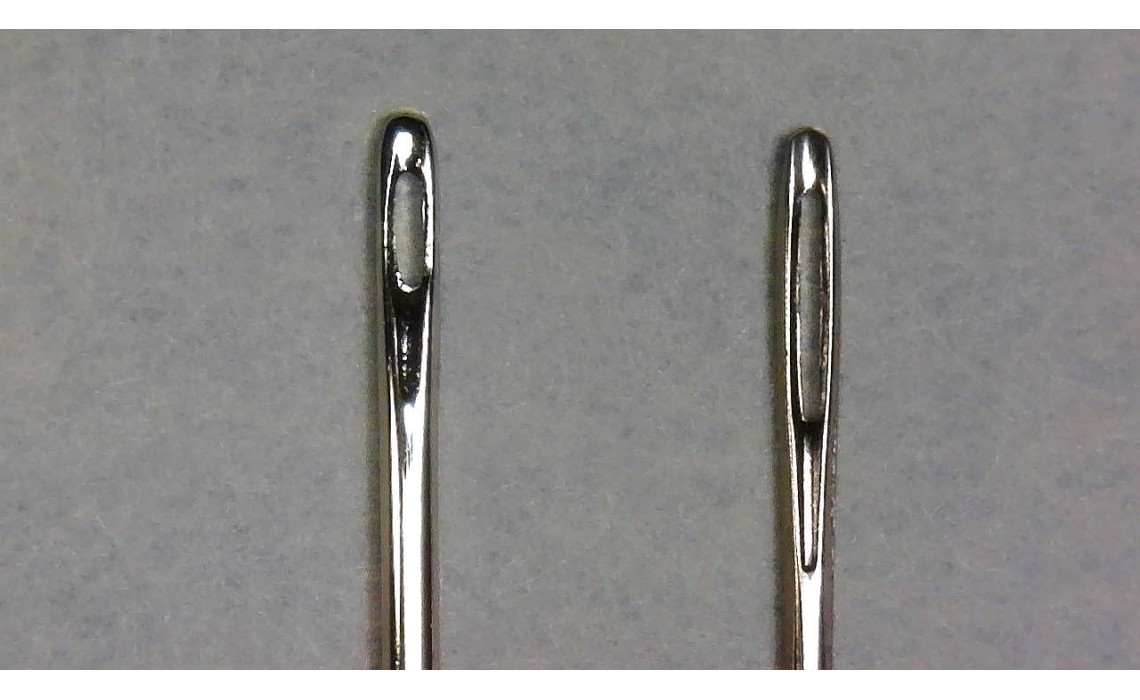The Eyes Have It
What makes a needle
suitable for bookbinding…well it’s mostly about the eye. Fabrics are quite flexible so the material
can be pushed around. If you look
closely at the eye of a regular sewing needle (right), you will see that in the
area around the eye the forming of the hole creates a swell to the diameter. Leather and especially paper are less
forgiving at being pushed around. Needles
designed for leather work and bookbinding (left) have eyes specially formed to
reduce the swell. This allows them to
pass through the stiffer material with less resistance.
Bookbinder and Saddle
Harness needles are the same needle except that the Saddle Harness needle has a
blunt point. Because in leatherwork holes are usually formed prior to the sewing,
the blunt point will follow the pre-formed hole. As most bookbinders use awls to pre-form the
sewing stations, they should consider using a blunt needle so a new hole isn’t
accidently created, which could be the case with a sharp point. The other advantages include the reduced likelihood
of piercing any existing thread and the horrible possibility of blood on the
book.
As with threads, the
larger the needle number the smaller the diameter. The #18 (aka 1/0) is probably the most common
diameter, which is suitable for threads in the 18/3 to 30/3 range. The #16 or #15 are suitable for cord-like
threads.
The Darner needle, with
its long length and sharp point, is very useful when sewing endbands where a
long reach into the gutter of the book is required.
Curved or bent needles
are especially handy when sewing Coptic and such books where you required to
loop the thread around previous sewings or sewing supports.

